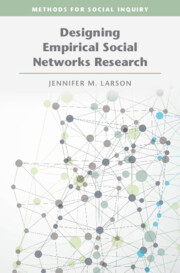Book contents
- Frontmatter
- Contents
- Figures
- Tables
- Acknowledgements
- Note on the Text
- 1 Introduction to Social Networks Research
- 2 Describing and Interpreting Social Network Features
- 3 Accounting for Substantive Network Features
- 4 Crafting a Network Theory
- 5 Moving from Theory to Empirics
- 6 Acquiring Network Data
- 7 Preparing Network Data
- 8 Working with Network Data in R
- 9 Conclusion
- Glossary
- Bibliography
- Index
- References
Bibliography
Published online by Cambridge University Press: 07 November 2024
- Frontmatter
- Contents
- Figures
- Tables
- Acknowledgements
- Note on the Text
- 1 Introduction to Social Networks Research
- 2 Describing and Interpreting Social Network Features
- 3 Accounting for Substantive Network Features
- 4 Crafting a Network Theory
- 5 Moving from Theory to Empirics
- 6 Acquiring Network Data
- 7 Preparing Network Data
- 8 Working with Network Data in R
- 9 Conclusion
- Glossary
- Bibliography
- Index
- References
- Type
- Chapter
- Information
- Designing Empirical Social Networks Research , pp. 159 - 167Publisher: Cambridge University PressPrint publication year: 2024

